Green Anole is a popular lizard. Bright green in color, with a luxurious throat bag, an active climber, and an accurate and fast hunter.
They are intelligent lizards who love to be hand-fed and are a great choice for beginners. But, as with all reptiles, there are nuances in the content.
Green Anole Size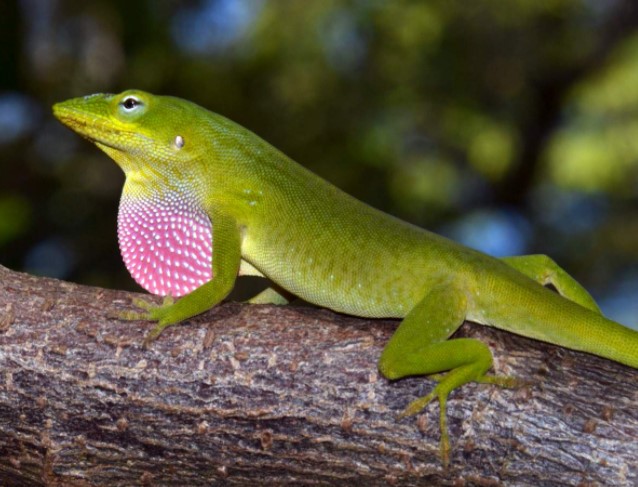
Males grow up to 20 cm, females up to 15 cm, however, the tail is half the length. The body is flexible and muscular, allowing them to move with great speed and ease among dense vegetation. They become mature at the age of 18 months, although they continue to grow throughout life, it just slows down significantly over time. The female differs from the male in that her throat sac is much smaller in size. Life expectancy is short, in captivity it is about 6 years. Those that were caught in nature are about three years old.
Habitat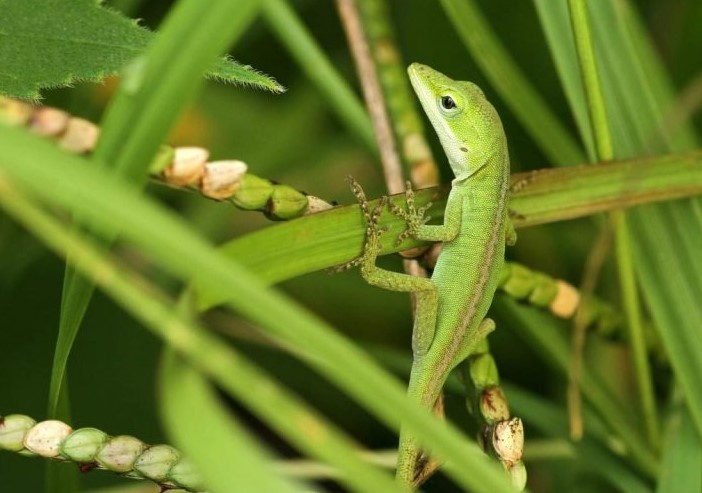
Green Anole lives in the USA, Jamaica, Cuba, Bahamas, Spain, Cayman, Palau, Guam, and the Mauritanian Islands. These lizards are found in upland and subtropical forests, among trees and shrubs, next to swamps, on rocky slopes, in vineyards and parks.
Lifestyle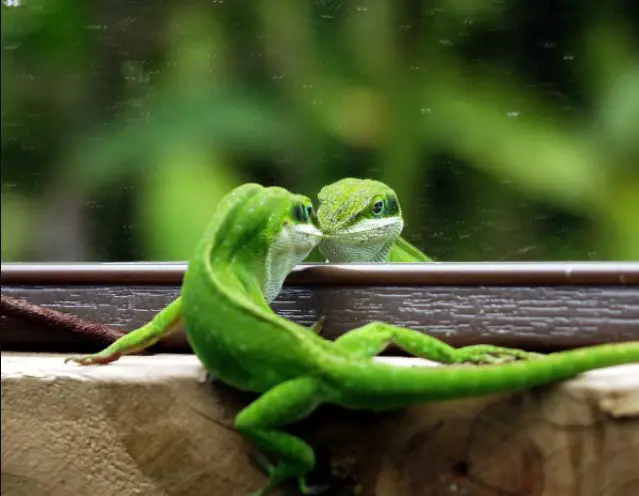
These reptiles are diurnal tree lizards, they descend to the ground only to lay their eggs, and also when one male is chasing another. They spend the night in the vegetation. They can often be found during the day, they love to bask in the sun.
In autumn and winter, adult and young lizards are not very active. For the winter, they gather in large groups. When the temperature drops, they cannot digest food, and therefore it begins to rot in the gastrointestinal tract. Therefore, in winter, the metabolic process in lizards slows down.
When Green Anole is in danger, it throws back its tail, which continues to wriggle for several seconds, at which time the lizard runs away from the offender. The discarded tail grows back over time, but its shape and size differ from the original tail.
Keeping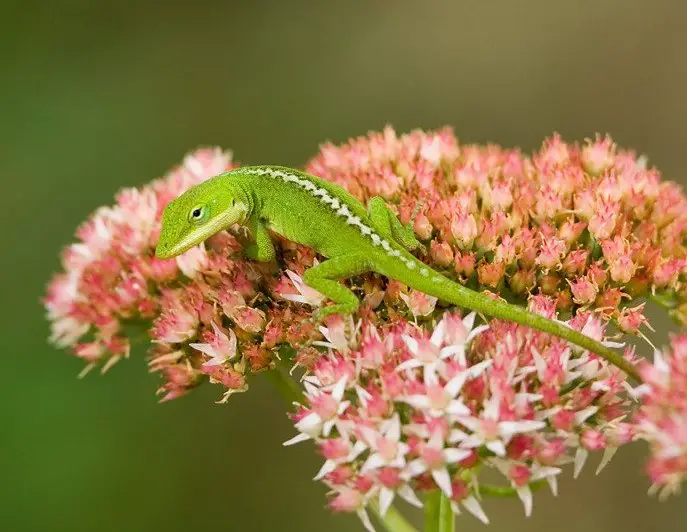
The terrarium for this lizard is preferably vertical since height is more important for them than length. It is important that there is good ventilation in it, but there are no drafts.
It is imperative that there are live or plastic plants in the terrarium. In nature, these lizards live in trees, and they hide there.
These reptiles love to bask in the sun, and in captivity, they need 10-12 hour daylight hours with a UV lamp. Temperatures range from 27 ° С during the day to 21 ° С at night. Place for heating – up to 30 ° С.
The terrarium should also have cooler areas, although the lizards love to bask, they also need shade to cool. Considering that they spend most of their time on branches, it is ineffective to use bottom heaters for heating. Lamps located in one place work much better.
They feel best if the terrarium is located higher, approximately at the level of your eyes. This can be achieved simply by placing it on the shelf.
In their natural habitat, these lizards live in trees, and the more the content resembles nature, the better.
Water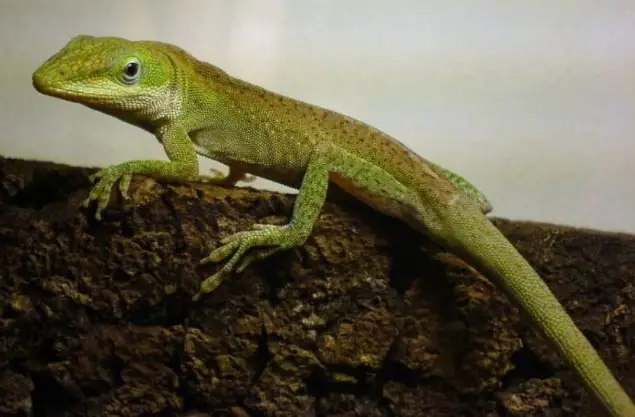
Lizards drink water from leaves, accumulated after rain or morning dew. Some reptiles can drink from the container, but they generally collect water droplets from the decor after spraying the terrarium.
If you are placing a container or drinker, make sure it is shallow, as lizards do not swim well and drown quickly.
Feeding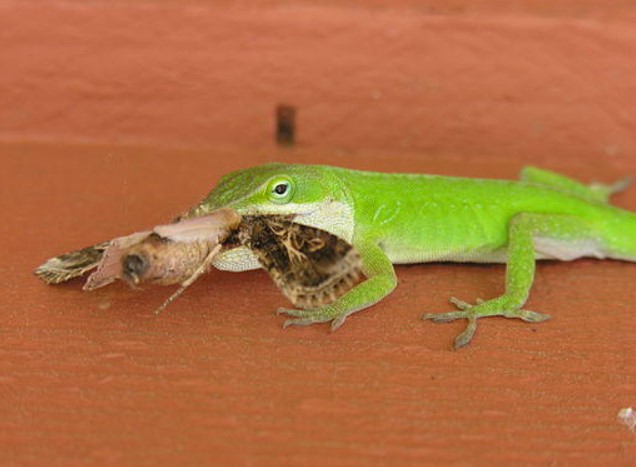
Lizards eat small insects: crickets, grasshoppers. You can use both purchased, from a pet store, and caught in nature.
Just make sure they are not treated with pesticides.
Communication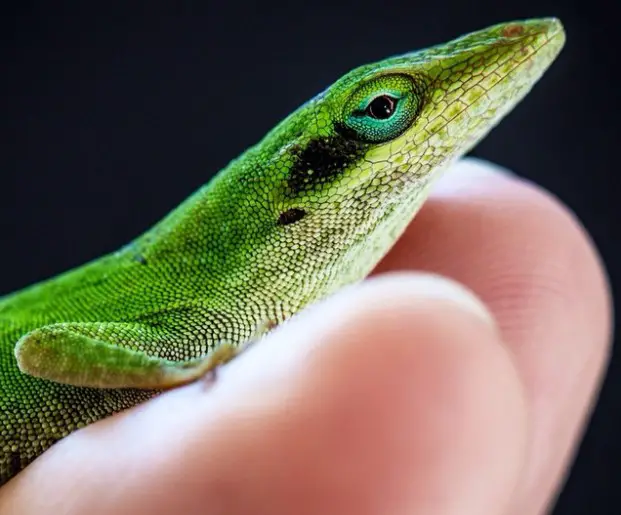
These reptiles are calm about the fact that they are taken in hand but prefer to climb on the owner, and not sit in the palm of your hand. They are very delicate and the tails break off easily, so be very careful when handling them.
If you recently bought a lizard, then give it time to get used and get rid of stress.

